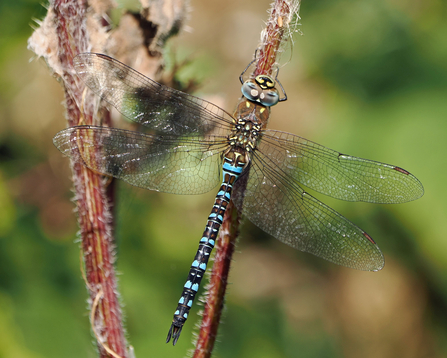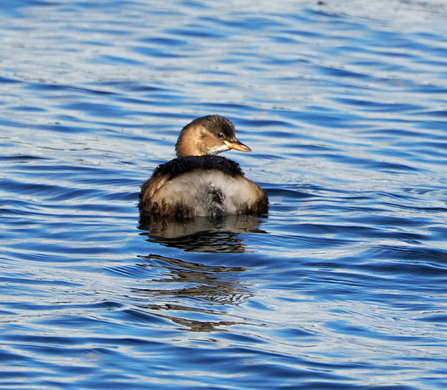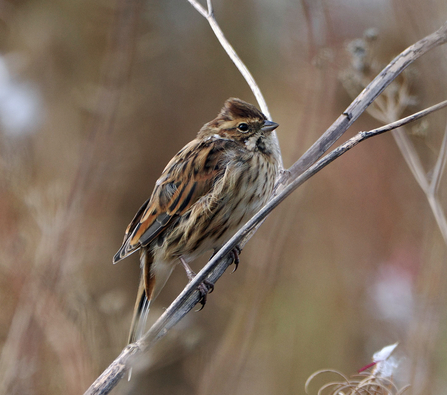I’ve seen several of these strikingly-marked dragonflies since arriving at North Cave Wetlands a couple of hours ago, but until now they’ve all been on the wing – tiny helicopters hovering for a moment, then vanishing in a whirr and a blur before popping up as if by magic several metres away.
Later in the afternoon, I come across another migrant hawker basking in a thicket. This one’s lower down and stays almost motionless, clinging to a stalk, as I edge closer to photograph it.




